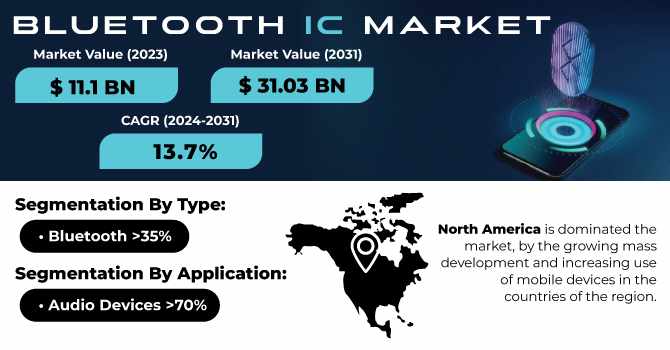
Universal Serial Bus (USB) devices have revolutionized the way we connect and transfer data between electronic devices. Serving as the backbone of connectivity, USB technology has evolved significantly since its inception, enabling users to connect a wide range of peripherals, including keyboards, mice, printers, external storage devices, and smartphones. The convenience of plug-and-play functionality, along with the ability to deliver power and data simultaneously, has made USB devices indispensable in both personal and professional settings. As technology continues to advance, USB devices play a crucial role in enhancing productivity and user experience across various applications.
USB Devices Market Size was valued at USD 32.28 billion in 2023 and is expected to reach USD 71.85 billion by 2031 and grow at a CAGR of 10.52 % over the forecast period 2024-2031.
Future Scope
The future of USB devices is marked by continuous evolution and adaptation to meet the growing demands of modern technology. With the rise of high-speed data transfer requirements and the increasing prevalence of 4K and 8K video content, the development of USB standards such as USB 3.2 and USB4 will become essential. These advancements will enable faster data transfer rates and support for multiple devices connected simultaneously. Furthermore, as the trend towards wireless technology continues, the integration of USB with emerging technologies, such as USB-C and Thunderbolt, will enhance the versatility and functionality of USB devices, ensuring they remain relevant in a rapidly changing technological landscape.
Trends
Current trends in the USB device market highlight the increasing adoption of USB-C technology, which offers a reversible connector and supports higher data transfer speeds. USB-C is becoming the standard for many new devices, including laptops, smartphones, and tablets, due to its versatility and convenience. Additionally, the demand for multi-port USB hubs is rising, allowing users to connect multiple devices simultaneously while addressing the limited port availability on many modern devices. The focus on portability and compact design is also shaping the market, with manufacturers developing sleek, lightweight USB devices that enhance user convenience.
Applications
USB devices are utilized across a multitude of sectors, including consumer electronics, IT, healthcare, and education. In consumer electronics, USB devices are essential for connecting peripherals, transferring data, and charging devices. In IT environments, USB drives and external hard drives are widely used for data backup and storage solutions. In healthcare, USB devices are employed to connect medical equipment and facilitate data transfer between devices. Educational institutions utilize USB technology for interactive learning tools, enhancing the learning experience for students.
Key Points
· USB devices are crucial for connectivity and data transfer in modern electronics.
· The future will see advancements in USB standards for higher data transfer rates.
· The adoption of USB-C technology is on the rise, providing versatility and convenience.
· Applications span consumer electronics, IT, healthcare, and education sectors.
· The focus on portability and compact design is shaping the USB device market.
Read More Details: https://www.snsinsider.com/reports/usb-devices-market-2604
Contact Us:
Akash Anand — Head of Business Development & Strategy
Email: info@snsinsider.com
Phone: +1–415–230–0044 (US) | +91–7798602273 (IND)











Write a comment ...